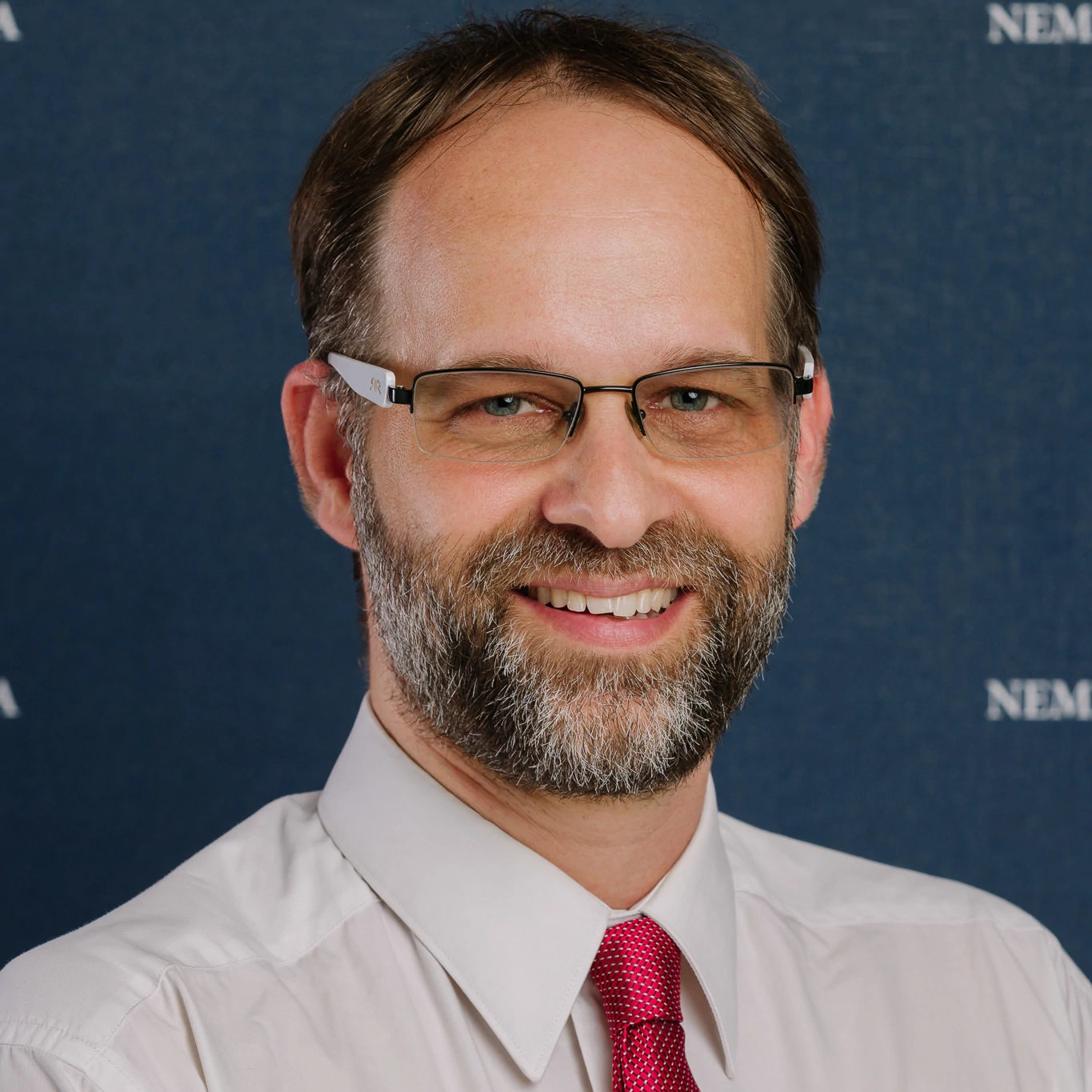
Director of University Education:
Zoltán Rakonczay Professor and head of the Institute of Pathophysiology at the Albert Szent-Györgyi Medical School of the University of Szeged.
Training coordinator: Ágota Győri eki@edu-sci.org
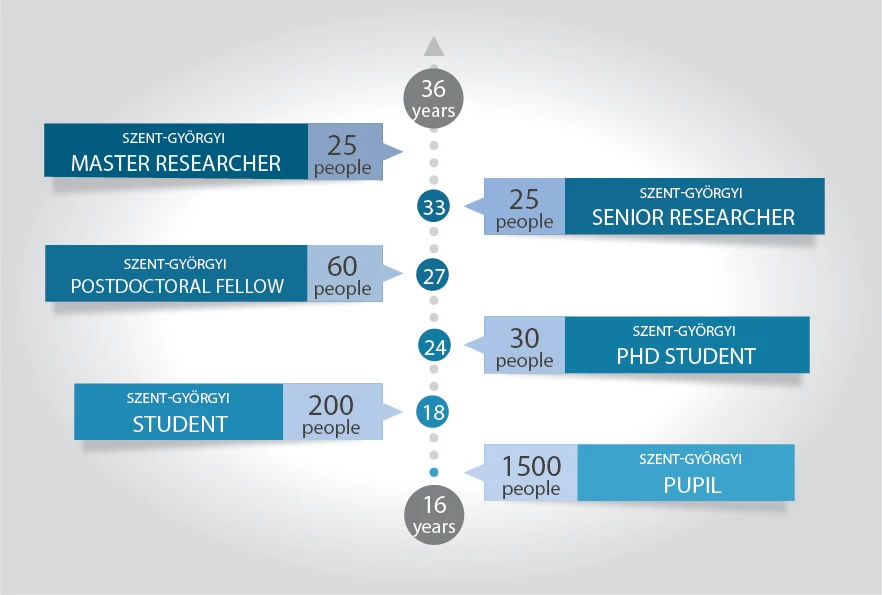
School System – The long-term plans of the Szent-Györgyi student program
UNIVERSITY EDUCATION PROGRAM (UEP)
The primary task of the National Academy of Scientist Education is to provide worldclass training for future researchers in Hungary. The NASE actively helps university students, from Budapest, Debrecen, Pécs, and Szeged, who are committed to science, to develop, starting in their first year, their scientific interests and enable them to get involved in scientific projects at the highest level. The NASE considers the front line of science as its reference point and sets the goal of reaching and surpassing it for its students and mentors.
At the same time, the aim of the Academy is, emphatically, not to support the cultivation of science at an average level, nor to assist studies that are part of university education. The education in the program actively complements university studies and the goal is that time spent in the laboratories of Szent-Györgyi Mentors be recognized by the universities in the form of credit points.
The education with in the NASE is based on the concept of providing its students with medium and long-term scientific development starting in their university years and, optimally, getting students to the point where they are independent, research group leaders who are resource independent which, as reference, is imagined at the level of MTA Lendület and ERC Starting Grant winners. To encourage this, the long-term goal of the NASE is to provide competitive scholarships at all stages of a scientist’s career (BSc, MSc, MD, or PhD student, Postdoctoral and Senior Researcher) that are superior to any alternative supported by the public sector in Hungary.
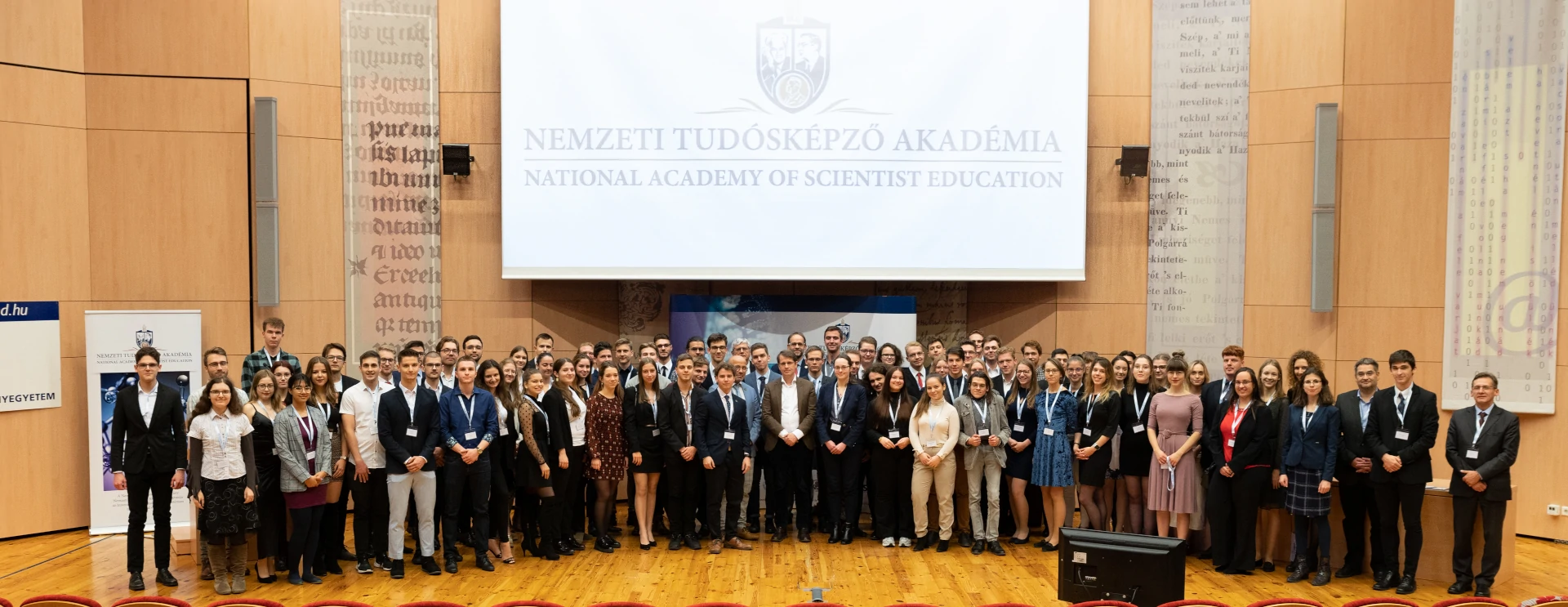
Szent-Györgyi Students and the Foundation’s scientific supervisors
OVERSIGHT OF THE ACADEMY’S UNIVERSITY EDUCATION
The oversight of the Academy’s university education is provided by the Board of Trustees of the National Biomedical Foundation, the general director of education (Bert Sakmann, Nobel Prize-winning German physiologist), the director of university education, and the six scientific supervisors who oversee the six Scientific Laboratories which operate in the four university cities.
The director of education makes a proposal on the method of education, is in daily contact with the professional leaders, helps in the selection of Mentors, and participates in the Meetings of Nobel Laureates and talented students.
Students and Mentors keep in touch with the scientific supervisor overseeing the work in the given city.
The scientific supervisors coordinate the professional activities of the students and the mentors working in the Scientific Laboratories that they supervise. With their advice, they promote scientific cooperation between laboratories with different instrumentation and methodological preparation that train students.
The scientific supervisors visit the students and their mentors at their research site once per semester. The visits for the second semesters also serve as a meeting to prepare their annual work reports. Based on a comparison of the annual written and oral reports (Audit) and the system of requirements, the directors of the NASE make an annual proposal for every student and mentor as to the further payment of the scholarship and the mentor’s honorarium, or its suspension or termination.
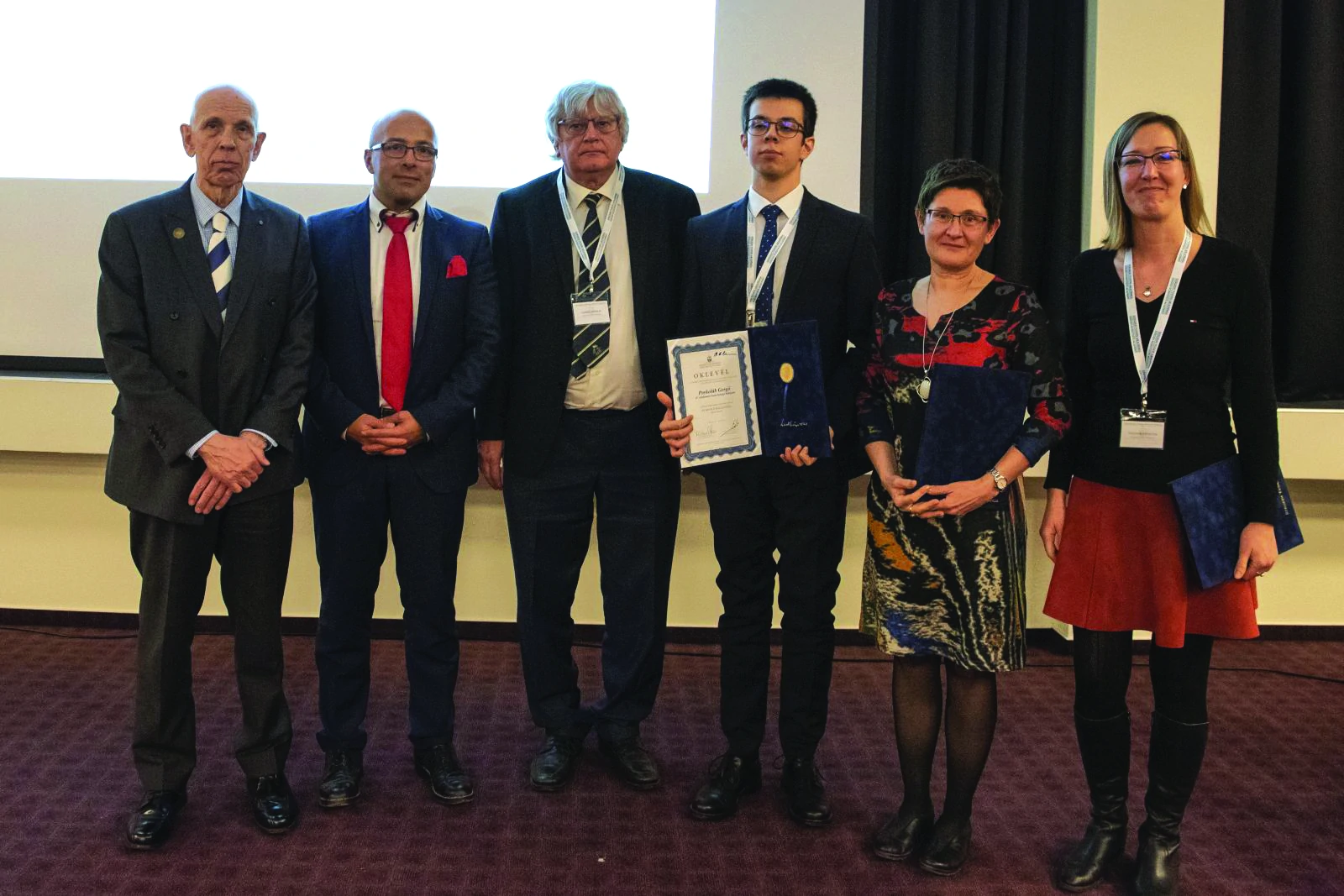
Ole Petersen International Mentor with the Foundation’s scientific supervisors, the “2019 Outstanding Student of the Year” recipient, and the Student’s Mentors
SCIENTIFIC LABORATORY WORK
The placement of students admitted to the NASE Scientific Laboratories is coordinated and supervised by the scientific supervisors of the NASE. Students are obligated, within 3 months of admission, to discuss their selected academic topic as well as their chosen Szent-Györgyi Mentor with the scientific supervisors.
The aim of the program is for the Szent-Györgyi Mentors and the Junior Mentors to actively help the students, on a daily basis, acquire necessary laboratory skills. International Mentors (recognized researchers who publish their results in the highest quality journals) also play an important role in the training process. The short-term goal is for the international mentors to regularly take turns participating in the work of the NASE’s Scientific Laboratories and dormitories, and to give lectures to the students, after which it is possible to have conversations with them.
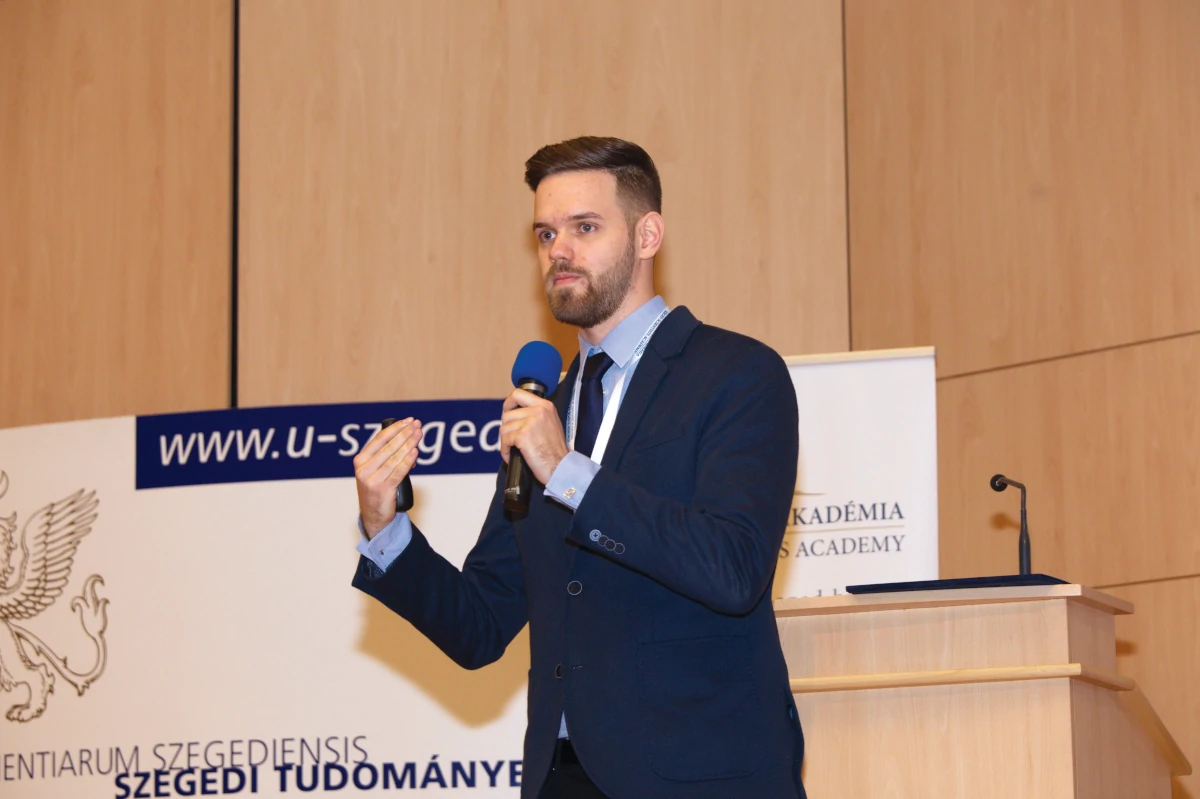
Szent-Györgyi Student presentation at the Meeting of Nobel Laureates and Talented Students
THE NATIONAL ACADEMY OF SCIENTIST EDUCATION’S REQUIREMENTS FOR BSC, MSC AND MD STUDENTS
NASE Students focus on their university studies in the mornings, while in the afternoons and evenings they engage in laboratory work and have discussions with International Mentors.
Students receiving a scholarship are required, by end of the third year, to achieve co-authorship in at least one original article which is published in a journal belonging to the top 25% of the given field of study, which they must present at either a domestic or international SSA conference.
By the end of the sixth (MD) or fifth (MSc) year, it is necessary to author an article with first authorship in a journal belonging to the top 25% of the given field of study, which in most of our doctoral schools may already be formally sufficient to submit as a PhD dissertation. Accordingly, the system of requirements helps provide a MD-PhD MSc-PhD equivalent qualification during an MD/MSc education. As an alternative, the students’ first author publication can be replaced by a publication with an impact factor of over 10, in which he/she is listed as a co-author and verifies his/her own results/work added to the creation of the publication in a creditable manner.